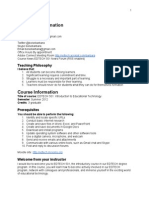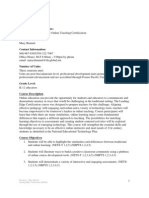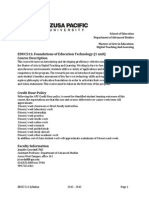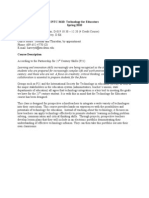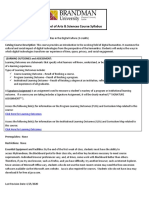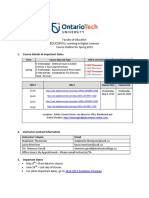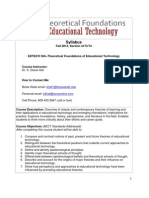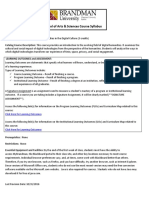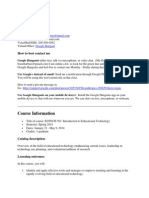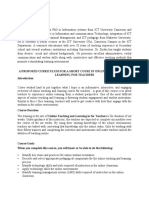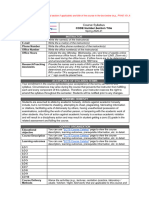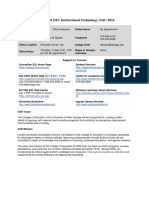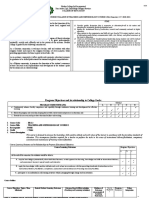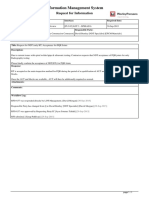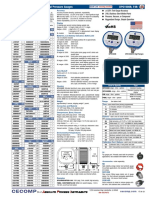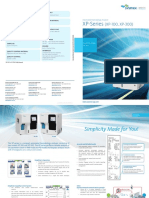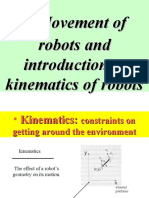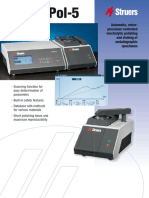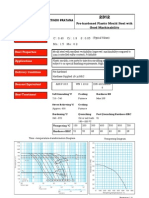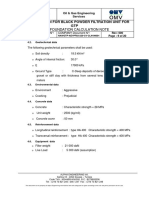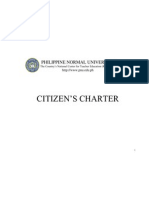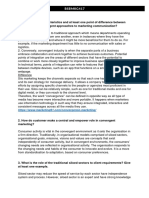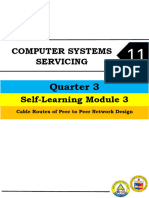0% found this document useful (0 votes)
8 views3 pagesSample Course 2
EPSY 8960 is a hybrid course focused on using technology to enhance teaching and learning in higher education. Students will engage in synchronous and asynchronous activities to develop a personal philosophy for technology use, create teaching materials, and apply Universal Design for Learning principles. Course assessments include participation, discussion boards, and a teaching portfolio, with an emphasis on academic integrity and respectful communication.
Uploaded by
MARK ANTHONY UMALICopyright
© © All Rights Reserved
We take content rights seriously. If you suspect this is your content, claim it here.
Available Formats
Download as PDF, TXT or read online on Scribd
0% found this document useful (0 votes)
8 views3 pagesSample Course 2
EPSY 8960 is a hybrid course focused on using technology to enhance teaching and learning in higher education. Students will engage in synchronous and asynchronous activities to develop a personal philosophy for technology use, create teaching materials, and apply Universal Design for Learning principles. Course assessments include participation, discussion boards, and a teaching portfolio, with an emphasis on academic integrity and respectful communication.
Uploaded by
MARK ANTHONY UMALICopyright
© © All Rights Reserved
We take content rights seriously. If you suspect this is your content, claim it here.
Available Formats
Download as PDF, TXT or read online on Scribd
/ 3
